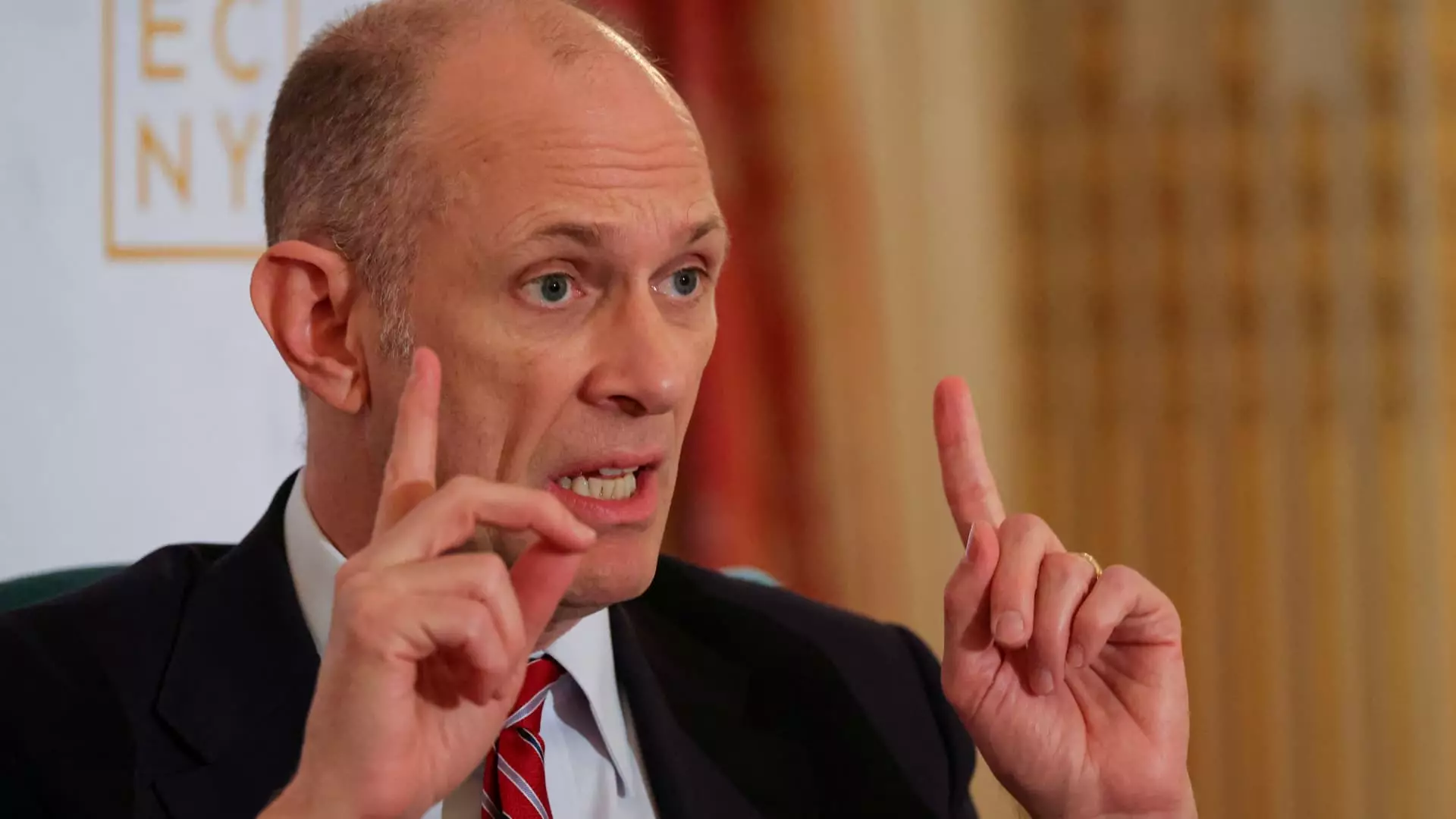In a landscape riddled with economic uncertainty, the recent threats of tariffs by former President Donald Trump have introduced a profound complexity into U.S. monetary policy. Austan Goolsbee, President of the Chicago Federal Reserve, articulated a cautious approach during a CNBC interview, suggesting that the Federal Reserve may hold back on interest rate changes due to the unpredictable nature of trade policies. This is reminiscent of an ongoing chess game—one where the stakes are much higher than just a lost queen or a damaged pawn. In this intricate play, the American economy finds itself caught in the crossfire, making maneuverability essential yet perilous.
The fundamental conundrum is clear: while Goolsbee leans toward lower interest rates, the overarching trade policies imposed by Trump complicate the Fed’s stance. This reflects a central challenge in modern economics—the intertwining of monetary policy and fiscal actions taken by the government. Policymakers at the Federal Reserve are not just steering the ship of interest rates; they are also navigating through a storm characterized by unpredictable tariffs that threaten to ignite inflation and stifle employment. Goolsbee’s acknowledgment that “the bar for me is a little higher for action in any direction” showcases the delicate nature of this balancing act.
The Threat of Stagflation
Perhaps the most alarming possibility that Goolsbee hinted at is the looming specter of stagflation—a combination of stagnant economic growth, high unemployment, and rising inflation. This scenario would pit the Fed in a bind: grappling with slowing economic activity while simultaneously wrestling with inflationary pressures. The mere mention of stagflation should serve as a wake-up call to policymakers who might otherwise underestimate the far-reaching repercussions of the tariffs proposed. History has shown that the cost of neglecting such warning signs can lead to dire economic consequences, and it would be shortsighted to assume we’ve escaped from the specter of economic malaise.
Goolsbee’s cautionary remarks reveal a deeper truth—the economy cannot thrive on a foundation of volatility. When asked about potential tariffs impacting major companies like Apple, he noted the resultant price hikes might not seem consequential from a macroeconomic perspective. Still, they represent a troubling trend that can reverberate throughout various sectors—leading consumers to tighten their wallets in anticipation of an uncertain future. Inflation ought to be seen not merely as numbers on a graph; it is the everyday challenge of families trying to make ends meet.
Central Bank Independence at Risk
The increasing entanglement of the Federal Reserve with fiscal and trade policy raises questions about the independence of central banking. The Fed must make decisions based on economic indicators, yet they are increasingly forced to consider political ramifications as well. It’s a precarious situation where economic theory meets political reality. The independence that has historically characterized the Federal Reserve is at stake, and with it, the trust of the American public in monetary policy.
Goolsbee is no stranger to this dance. Buffeted by market reactions, political pressures, and the continuous fluctuations in both employment and inflation, he is left to navigate a challenging economic terrain with caution. His position as a voting member of the Federal Open Market Committee necessitates a careful consideration of future rate cuts, but it must not come at the expense of clarity and candor regarding the intricacies of economic policy.
Amid this whirlwind, Goolsbee maintains an undercurrent of optimism, envisioning a positive trajectory for economic growth in the long run despite the turbulence that Trump’s tariffs have created. This faith in economic recovery reflects a core tenet of center-wing liberalism—an adherence to the belief that with informed policy choices, progress is within reach.
Goolsbee’s statements presage a more complex economic strategy going forward. As markets anticipate rate cuts and watch for the Fed’s next moves, the imperative remains: a precisely managed economic policy that acknowledges the realities of today’s trade tensions while striving for lasting growth. What remains to be seen is whether policymakers can rise to this challenge or be overwhelmed by the pressures of the political chessboard.

